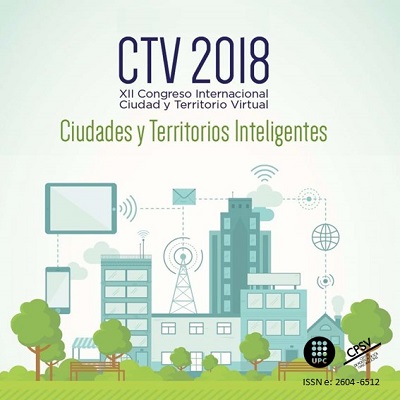Institutional Resistance to Implement the New Urban Agenda in Puerto Vallarta, Mexico
DOI:
https://doi.org/10.5821/ctv.8236Keywords:
tourist territory, institutional resistance, New Urban AgendaAbstract
Participation exposes the difficulties to implement the New Urban Agenda in Puerto Vallarta, a tourist destination located on the Mexican Pacific coast. The narrative is exposed in three parts. The first one pf it’s, showing the global postulates about development and sustainable city around the Sustainable Development Goals (SDG) and the New Urban Agenda (NAU). In the second, urban planning and planning instruments are presented in Puerto Vallarta. Finally, discussing the recent trends of real estate growth in the tourism area, where the municipal authority discretionally applies the urban regulations to favour real estate expansion linked to tourism. The conclusions suggest encouraging citizen participation to formulate territorial strategies that integrate the postulates of the New Urban Agenda in Puerto Vallarta.
The complex relationship between territory and society is present in the global environment; in an attempt to access sustainable urbanization processes, global efforts have been made to implement the right to the city. An active agent in these actions has been the United Nations Organization (UN), through the agency Habitat, leading efforts since 1976 since the celebration of the World Conference on Human Settlements Habitat I, held in Vancouver, Canada. This went on 20 years later with Habitat II in Istanbul and just two years ago, the Habitat III meeting took place in Quito. The concrete achievement of this last event was the publication of the New Urban Agenda (NAU), an action guide agreed by the UN countries for the future of housing and sustainable development in the urban space (UN, 2016). The document has 17 basic principles and 175 general warrants. Of them, there are 5 general strategies:
1) The need to have national urban policies, reassessing the role of the State.
2) Update the legal-legislative framework of urbanization.
3) Have a good urban design.
4) Find financing mechanisms for the city.
5) Implement the NAU at the local level.
In Mexico, the federal government incorporated these strategies into the legal framework issuing the General Law of Human Settlements, Territorial Planning and Urban Development (LGAHOTyDU) at the end of 2016. The law contains principles aligned with the paradigm of equitable urbanization as the right to the city, social cohesion and citizen participation (Mexico, 2016). However, these efforts are not incorporated with the same level of enthusiasm at the municipal level, where officials show little enthusiasm and interest in accessing new ways of operating territorial management. This is observed in cities whose main economic base is tourism, which are subject to strong real estate pressures that clash with the aspiration of having mechanisms that balance the burdens and benefits generated by urbanization. The conclusions suggest encouraging citizen participation to formulate territorial strategies that integrate the postulates of the New Urban Agenda in Puerto Vallarta.























